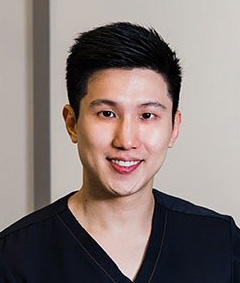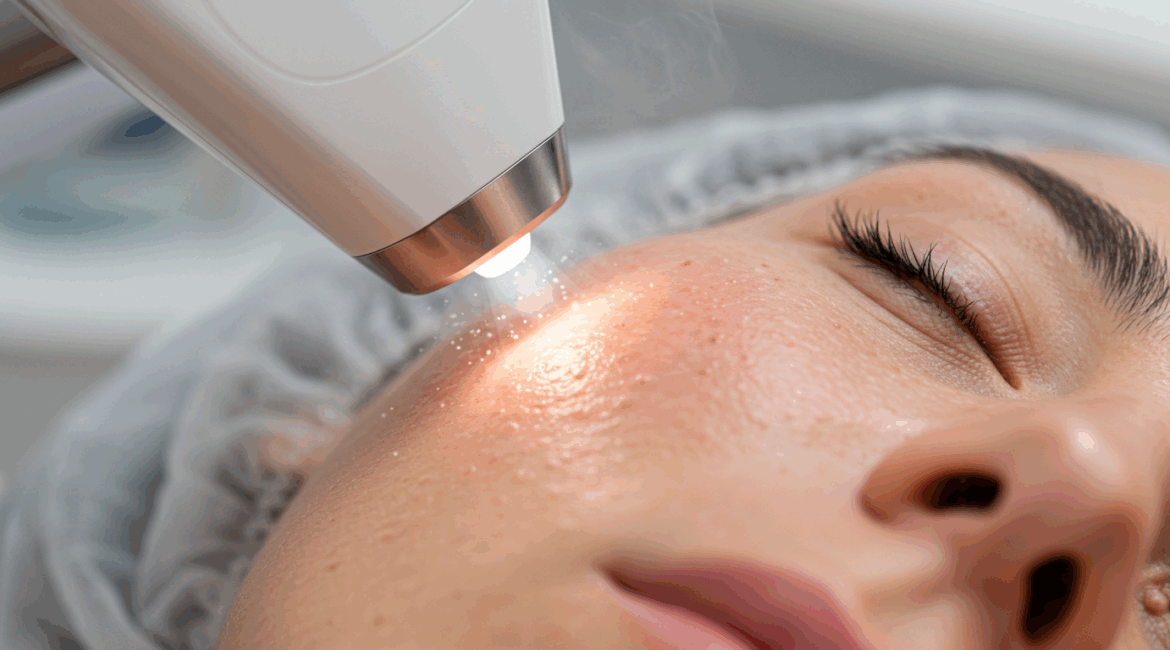If you’ve struggled with acne in the past, you may still be dealing with long-term effects like scarring and enlarged pores — even after the breakouts are gone. These concerns often linger because they involve structural changes in the skin, not just surface imperfections.
Pico laser has emerged as a non-invasive solution for improving skin texture over time. It’s a non-ablative laser, which means it doesn’t remove the top layer of skin, making it a gentler option for many skin types. Instead, it delivers ultra-short bursts of energy that stimulate collagen production, smooth uneven texture, and refine pores — all without significant downtime.
That said, it’s important to understand that not all scars or pore issues are the same. Rolling scars, ice pick scars, and enlarged pores each respond differently to laser treatment. Your skin’s tone, depth of scarring, and oil activity will all influence how well Pico laser works for you — and whether it should be used alone or combined with other treatments.
In the sections below, we’ll explore how Pico laser works, what it can realistically achieve, and how to know if it’s the right fit for your skin concerns.
Understanding Your Skin Concerns
To know whether Pico laser is the right choice, it’s important to understand what’s really causing the texture issues on your skin. While acne scars and enlarged pores can look similar at first glance, they have different underlying causes — and that affects how they respond to treatment.
Acne Scars
Acne scars develop when inflammation from breakouts damages collagen, the structural protein that keeps skin smooth and firm. Depending on how your skin healed, you may see different types of scars:
- Rolling scars: broad depressions with soft edges
- Boxcar scars: deeper with more defined edges
- Ice pick scars: narrow, deep, and pitted
Pico laser can help improve the appearance and texture of these scars, especially rolling and boxcar types. However, deep or tethered scars, like ice pick or certain boxcars, often need a combination of treatments for more significant improvement.
Enlarged Pores
Pores may look more prominent due to:
- Excess oil production
- Age-related collagen loss
- Residual effects from past acne
While you can’t “shrink” pores permanently (since they’re part of your skin’s structure), treatments that tighten and firm the skin — like Pico laser — can make them appear smaller and more refined. Addressing underlying oiliness and improving skin elasticity plays a key role in managing this concern long-term.
How Pico Laser Improves Skin Texture
Pico laser isn’t just used for pigmentation — it also plays a growing role in refining skin texture. Whether you’re targeting acne scars or enlarged pores, the laser’s ability to stimulate collagen and encourage cellular repair makes it a versatile tool in skin rejuvenation.
Stimulates Collagen
Pico laser delivers picosecond pulses of energy into the skin, triggering a photoacoustic effect that breaks down pigment and activates the body’s natural healing response. This stimulation helps rebuild collagen and elastin — the proteins responsible for firmness and elasticity.
Over the course of multiple sessions, this process can:
- Soften the edges of rolling and boxcar scars
- Improve skin tone and smoothness
- Enhance overall texture without ablating the surface
It’s a gentler, non-ablative alternative to more aggressive resurfacing lasers, making it suitable for many skin tones, including darker skin types.
Tightens Pores
As collagen production increases and skin becomes firmer, pores can appear smaller — especially in areas like the cheeks and nose. By reinforcing the skin structure around the pore opening, Pico laser helps create a more refined, even surface.
Some patients also notice improved oil control over time, especially when combined with proper skincare and supportive treatments. While pores can’t be eliminated entirely, Pico laser makes them less noticeable by addressing the causes of their enlargement.
Summary Table: What Pico Laser Can and Can’t Do
| Concern | What Pico Laser Does | What It Can’t Do Alone |
|---|---|---|
| Rolling/Boxcar Scars | Smoothens skin texture | May not fully release deep scars |
| Ice Pick Scars | Improves appearance slightly | Often needs subcision or TCA CROSS |
| Enlarged Pores | Tightens surrounding skin | Won’t “shrink” or close pores permanently |
What to Expect from Treatment
Pico laser treatments for acne scars and enlarged pores are progressive, meaning results develop over time — not overnight. Knowing what to expect can help you stay consistent and make informed decisions about your skincare journey.
How Many Sessions Are Needed?
Most people need 3 to 5 sessions to see visible improvement in skin texture. The exact number depends on:
- The depth and type of acne scars
- How your skin responds to treatment
- Whether you’re combining Pico with other therapies (e.g. subcision or microneedling)
For deeper or more resistant scars, your healthcare provider may recommend additional sessions or a combination approach to achieve optimal results.
When Will You See Results?
Many patients start noticing smoother skin after 2–3 sessions, with continued improvement as collagen builds up over the following weeks. Since Pico laser doesn’t rely on heat, downtime is minimal — but the effects are gradual and cumulative.
Peak results are often visible one to three months after the final session, as the skin continues to remodel itself beneath the surface.
Will You Need Maintenance?
For long-term texture improvement, some people opt for maintenance sessions every 6 to 12 months — especially for managing:
- Oiliness and enlarged pores
- Mild textural irregularities
- Ongoing collagen support as skin ages
Final Thoughts: Is Pico Laser Right for Your Scars or Pores?
Pico laser offers a safe, gradual approach to improving skin texture, making it a valuable option for treating acne scars and enlarged pores — especially if you’re looking for low-downtime, non-invasive solutions.
Its ability to stimulate collagen and refine skin without damaging the surface makes it particularly suitable for diverse skin tones, including those prone to post-inflammatory hyperpigmentation. However, results vary depending on your scar type, skin condition, and treatment consistency.
At Sozo Clinic, Dr. Justin Boey designs personalised treatment plans tailored to your skin’s needs — whether that involves Pico laser alone or in combination with other therapies. A qualified aesthetic doctor will assess your skin’s needs and recommend the safest and most effective strategy for your long-term goals.
If you’re ready to explore how Pico laser can work for your skin, visit our Pico Laser treatment page or book a consultation to learn more about tailored acne scar solutions.





